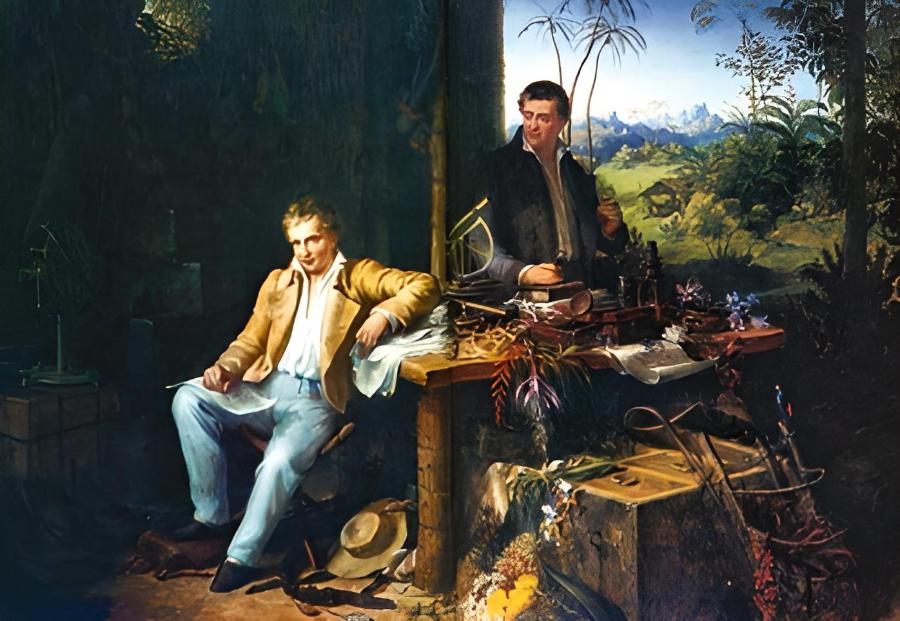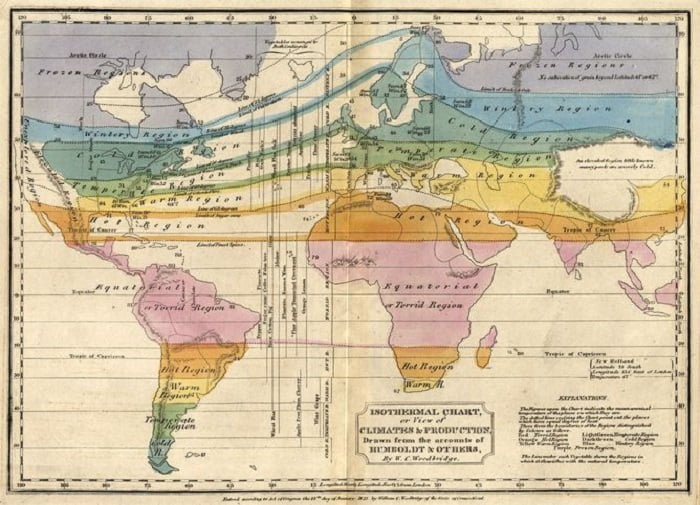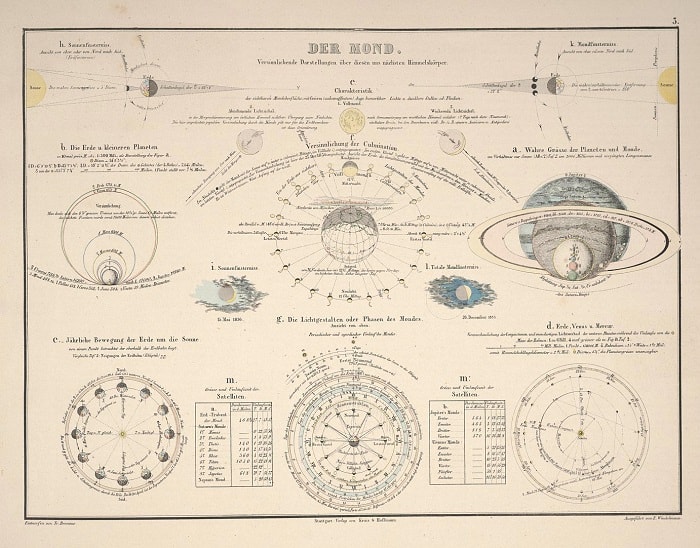Although he is little known today, the German Alexander von Humboldt is widely regarded as one of the most important scientists of the modern era in every way. Humboldt made several expeditions in America between 1799 and 1804, inspiring young Charles Darwin to see the famous tropical belt with his own eyes and again providing tools to answer such questions. Throughout the 19th century, the name Humboldt was a name that was mentioned every day and was the cornerstone of the science of heroism and humanity. He gained fame as a romantic adventurer who did rafting in the Orinoco, climbed Chimborazo in Ecuador (which he thought was the world’s highest mountain), escaped from the jaguars, and took the electric eel in his hand.
Who was Alexander von Humboldt?

“A whole French academy traveled in his shoes,” Ralph Waldo Emerson said of him. Indeed, Humboldt has contributed to many disciplines, from botany to zoology and geology, from physiology to geophysics, and from geography to anthropology and political economy. He became a catalyst for international science, and the global weather stations he set up sparked climate change research. In his bestselling books, Humboldt used his adventures to teach radical new concepts in science and to condemn slavery and colonialism. He wrote that all people are one species: “All [races of men] are in like degree designed for freedom” (Humboldt 358). However, his name was never linked to a specific, groundbreaking discovery. Isaac Newton had gravity; Charles Darwin had evolution; and Albert Einstein had relativity. What about Humboldt’s?
The answer is ecology. Although this word was derived after he died, it was Humboldt who founded the field of plant ecology. His writings highlighted the interconnectedness of all elements in nature, including people in the modern, global world. Born in Berlin in the age of Voltaire in 1769, Humboldt died in 1859, while Darwin’s On the Origin of Species was preparing to be published. He grew up on his family estate in Tegel with his brother Wilhelm (who would become a famous philosopher and linguist), both of whom were members of the exciting intellectual community shaped around Kant, Goethe, and Schiller.
During this time, those who had gone on a scientific expedition would return from their voyages with stories of exotic people, strange but beautiful outdoor pictures, samples of ships and animal and plant fossils, minerals, and all kinds of interesting primitive works of art. European science was unfamiliar to all. Young Humboldt was ignited with the desire to explore the world. His hunger for knowledge led him to go to a number of universities-Frankfurt, Göttingen, Hamburg, and Freiberg-to learn botany, history, politics, geology, chemistry, physiology, and linguistics. When the family wealth was inherited by him, he found the freedom to realize his dream of dedication to science. Soon he set out for South America with his fellow botanist, Aime Bonpland.
The effort to understand the world

Alexander von Humboldt thought that science needed a new way to understand the interrelation of everything; it should have turned more to the object, not to the collections. How was the Earth like this with the plants that breathe carbon dioxide and the animals that breathe oxygen, or with the continents in the middle of the oceans where the global currents between the polar ice sheets continuously moved? Was electricity the secret of life? The electric eel allowed him to find the answer. Why are rocks and minerals the same all over the world, but plants, animals, and humans are different everywhere? People all over the world grow potatoes, corn, peaches, cherries, wheat, olives, and grapes, but nowhere would the wild type of these plants be found. So where had they come from?
So where did people come from? Why are our looks, traditions, and languages so different from each other? Are all languages connected? Are all people related? Are we shaped by our environment—and are we shaping it? Why did Christopher Columbus sail to the West? What is left of the American civilization destroyed by the Europeans? How did Inca gold and Mexican silver change the world economy? What causes tropical diseases, and can they be cured? Will Venezuela and Mexico rise and establish independent republics like the United States?
Such questions—and hundreds of them—were the texture of Humboldt’s dozens of books, ranging from scientific monographs to popular articles, all of which have reshaped our understanding of the planet and encouraged the creation of dozens of new specializations in science. Although he has never taught at the university, he has mentored many young scientists, explorers, and artists. One of them, Louis Agassiz, made the following observation: “Every schoolboy is familiar with his methods now, but he does not know that Humboldt is his teacher.” His mind is hidden from us “by the very abundance and productivity it causes.”
Physics of the world

Humboldt laid the foundations of a new science branch he named “General Physics of the Earth,” which is now called “Earth Systems Science.” This branch is still rapidly growing by blending in the ecology and earth sciences, atmospheric and climate sciences, and geology and ocean sciences. Humboldt’s General Physics of the Earth observes how our Earth functions and how human activities change this functioning. The beginning of the development of this discipline can be seen in two of Humboldt’s most important works. The first is at the beginning of his career, and the second is at the end. After studying the tropical belt of the American continent for five years, Humboldt settled in Paris, then the center of Earth science, and started publishing his findings.
Essay on the Geography of Plants, 1807, is his first volume of work (thirty volumes in total), and it is a sketch in which his most important observations are synthesized. In the illustration shown above, there are very crowded data columns on both sides of the Chimborazo rising in the middle. Along the slope of the mountain, plants specific to the region rise from generation to generation: At the equator there are tropical plants; in the temperate zone there are pine and oak; the alpine plants lie higher; and there are rocks and polar ice at the summit. Each generation represents a climate zone, emphasizing how the mountains’ heights correspond to global spheres. In each generation, plants are typical “communities,” and animal life is linked with physical properties such as height, rainfall, light intensity, temperature, soil type, and humidity.
Each community of wild plants has its own distinctive visual physiognomy. Nature became a part of human culture and each individual’s mind and heart as people migrated across the globe. The person who studies Humboldt’s vast picture of the Earth joins that picture, actively struggling to connect the elements, like many scientists whose contributions made this picture possible.
Thus, according to Alexander von Humboldt, the reader can take credit for everything the brave nature scientists discovered in the skies and the ocean, underground caves, and the highest snowy hills without leaving his home; the reader, who lives in both the past and the present, can learn to understand the great laws of nature and communicate with all the people of the world.
Alexander von Humboldt and the Cosmos

Alexander von Humboldt moved to Berlin in 1827 and spent his last years writing the best-selling work Cosmos, published between 1845 and 1862, which represents a sum of everything he learned. The first volume transports the reader to the stars, traversing interstellar wonders and leading to the greatest miracle, Earth, in the depths of vast space. The second volume navigates the history of humanity to show how our concept of “nature” has evolved in art and literature, science and technology, and discoveries over a thousand years. The next books explain everything that is known about the stars and planets, the Earth, and the world of living things. However, even Humboldt can’t keep up with how quickly science is changing, so he won’t be able to see his great vision come to life before he dies.
But his vision has no end anyway; even today, science is still making additions to it. So, if you’re wondering what Humboldt’s most important discovery was, the answer is the Cosmos. Humboldt shows the integrity of the physical universe by emphasizing that we humans see the beauty and order in this universe and give it life as a Cosmos. According to Humboldt’s view, all of nature and all of history cooperated to create the Cosmos, and it will be the future of all humanity to continue it with science, art, and poetry.
Bibliography:
- Frank Baron, “From Alexander von Humboldt to Frederic Edwin Church: Voyages of Scientific Exploration and Artistic Creativity”. HiN VI, vol. 10, 2005.
- Franklin Kelly, ed. Frederic Edwin Church. Washington, D.C.: National Gallery of Art, Smithsonian Institution Press 1989.
- Kevin J. Avery, In the Heart of the Andes: Church’s Great Picture. New York: Metropolitan Museum of Art 1993.
- Humboldt’s legacy”. Nature Ecology & Evolution. 3 (9): 1265–1266. 29 August 2019. doi:10.1038/s41559-019-0980-5. ISSN 2397-334X. PMID 31467435.
- Hermann Klencke, Gustav Schlesier, Lives of the brothers Humboldt, Alexander and William New York (1853), p. 13.


